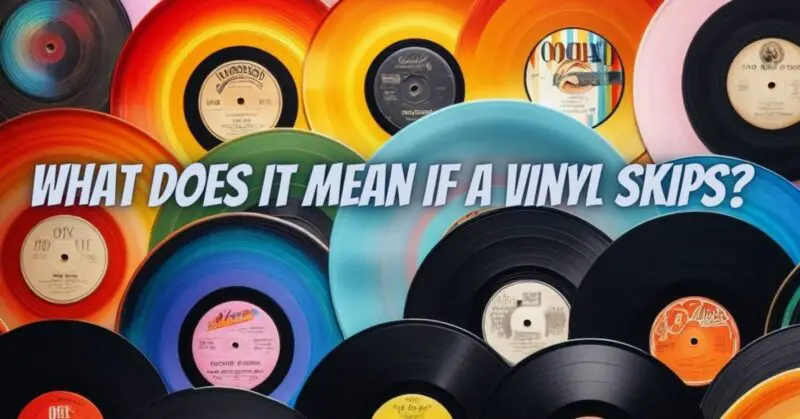Vinyl records, celebrated for their warm and analog sound, hold a special place in the hearts of music enthusiasts and audiophiles. However, one of the enduring challenges associated with vinyl playback is the occasional occurrence of skips. A skipped groove can disrupt the listening experience and leave listeners puzzled about its cause. In this insightful article, we will explore the various factors that can lead to vinyl skips, how to diagnose and address them, and the significance of understanding this phenomenon in the context of analog audio.
What Does it Mean When a Vinyl Skips?
When a vinyl record skips, it refers to a momentary interruption in the playback sequence. This interruption typically occurs when the stylus (needle) loses contact with the grooves on the record and jumps forward or backward. Skipping can be a source of frustration for vinyl enthusiasts, as it not only disrupts the flow of the music but also poses potential risks to both the record and the stylus.
Common Causes of Vinyl Skipping
Understanding the causes of vinyl skips is crucial for troubleshooting and resolving the issue. Several factors can contribute to skipping:
1. Surface Imperfections
Small imperfections on the record’s surface, such as dust, dirt, or minute scratches, can interfere with the stylus’s tracking. As the stylus encounters these imperfections, it may momentarily lose contact with the grooves, resulting in a skip.
2. Tracking Force
The tracking force, also known as the stylus pressure, refers to the downward force exerted by the stylus on the record’s surface. If the tracking force is set too lightly, the stylus may not adequately track the grooves and is more likely to skip. Conversely, excessive tracking force can lead to excessive groove wear and potential skips.
3. Anti-Skate
Anti-skate is a control mechanism on turntables that counteracts the lateral forces that can pull the stylus inward or outward. Incorrect anti-skate settings can contribute to tracking issues, including skipping.
4. Cartridge Alignment
Proper cartridge alignment is essential to ensure that the stylus correctly follows the record’s grooves. Misaligned cartridges can cause tracking problems, including skips.
5. Environmental Factors
External factors in the listening environment can induce skipping. Vibrations, uneven surfaces, and external disturbances, such as footsteps or loud sounds, can affect the turntable’s stability and cause skips.
6. Stylus Condition
A worn or damaged stylus can lead to tracking problems, including skipping. Regularly inspect the stylus for signs of wear and replace it as needed to maintain optimal playback.
7. Record Condition
The condition of the vinyl record itself is a significant factor. Deep scratches or heavy damage in specific areas of the grooves can lead to skips. Additionally, warping of the record can cause irregular stylus tracking.
Diagnosing and Addressing Skips
Diagnosing and addressing skips on vinyl records involve a systematic approach:
- Inspect the Record: Examine the record’s surface under good lighting to identify visible imperfections such as dust, dirt, or scratches.
- Clean the Record: Clean the record using a dedicated record cleaning brush or an anti-static brush. For deeper cleaning, use a gentle record cleaning solution and a microfiber cloth. Always clean in the direction of the grooves.
- Check Turntable Setup: Ensure that your turntable is correctly set up. Verify the tracking force, anti-skate, and cartridge alignment are properly adjusted according to the manufacturer’s specifications.
- Environmental Factors: Isolate the turntable from external disturbances and vibrations by placing it on a stable surface or using an isolation platform.
- Inspect Stylus: Examine the stylus for wear or damage. Replace it if necessary.
- Monitor Record Condition: Pay attention to any audible issues or skips as you play the record. If the problem persists, the record may have deep damage that requires professional repair or replacement.
Understanding why vinyl records skip is essential for preserving the quality of your vinyl collection and ensuring an uninterrupted listening experience. By systematically addressing common causes of skips, maintaining proper turntable setup, and carefully inspecting records for imperfections, you can minimize the occurrence of skips and fully enjoy the rich and authentic sound that vinyl records offer. Remember that patience and attention to detail are key when addressing this issue, and seeking professional assistance when needed can help maintain the integrity of your vinyl listening experience. Vinyl records, despite their occasional quirks, continue to captivate music enthusiasts with their timeless charm and immersive sound.


